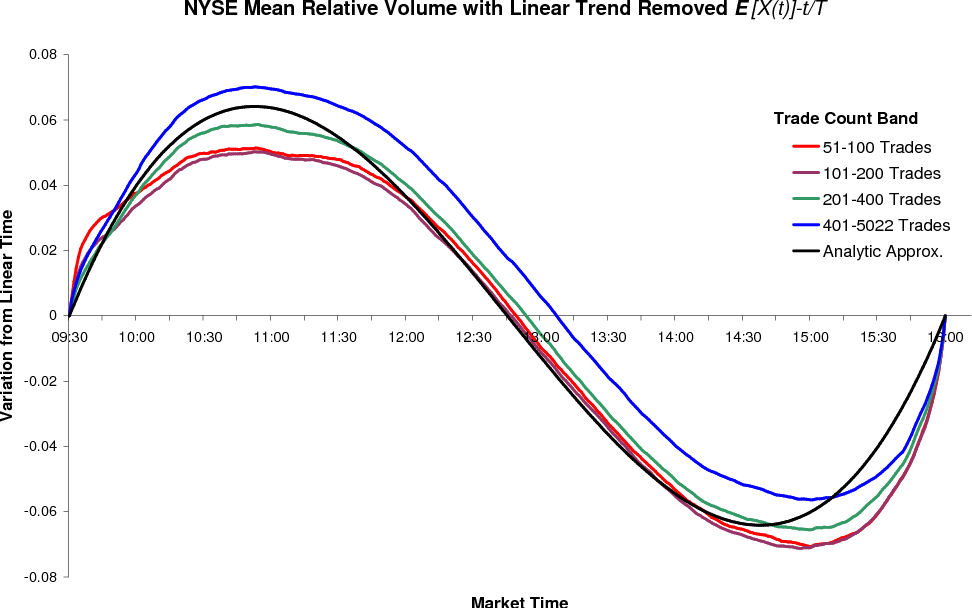Contents
As shown in the diagram, the first node or the Root node is the training data set, followed by the internal node and leaf node. The internal node acts as the decision-making node, as this is the point at which the node divides further based on the best feature of the sub-group. The final node or the leaf node is the one that holds the decision. In these scenarios, we can create a simulated environment and find correct or wrong answers by providing a reward system and we have seen that this class of algorithms is known as Reinforcement Learning.
Machine Learning has been one of the most rapidly advancing topics to study in the field of Artificial Intelligence. There are a lot of algorithms under Machine Learning that have specifically gained popularity due to their transparent nature. One of them is the Decision Tree algorithm, popularly known as the Classification and Regression Trees algorithm. From the above list of customer data, find the property that best separates the customers into two groups.
Commonly used Algorithms for Reinforcement Learning
This algorithm is widely used in making Decision Trees through Classification and Regression. Decision Trees are widely used in data mining to create a model that predicts the value of a target based on the values of many input variables . The most frequent halting method is to utilize a minimum amount of training data allocated to each leaf node. If the count is less than a certain threshold, the split is rejected and the node is considered the last leaf node. In the decision tree, the nodes are split into subnodes on the basis of a threshold value of an attribute. The CART algorithm does that by searching for the best homogeneity for the subnodes, with the help of the Gini Index criterion.
Other problems include Anomaly Detection and Latent Variable Detection. Fraud Detection – classification algorithms can be used to detect fraud transactions, fraud customers, etc. using historic data to identify the patterns that can lead to possible fraud. Machine Learning is defined as a set of computer algorithms that makes systems autonomously learn and yield outputs and further improve from various analysis and outputs. Data will be fed to these algorithms, by which they automatically get trained to perform a certain task, get a certain output, and hence we can apply that for our real-life business scenarios.
Each node in the tree is a test case for some property, and each edge descending from the node represents one of the possible solutions to the test case. This is a recursive process that is repeated for each new node-rooted subtree. Let’s have a look at what a decision tree looks like and how it works when a fresh input for prediction is provided. The graphic below depicts the basic construction of the decision tree. Every tree has a root node via which the inputs are routed. This root node is subdivided further into sets of decision nodes where findings and observations are conditionally based.
- This in turn helps in appropriate placement of the items on the website or inside of a physical establishment.
- Other Supervised Machine Learning Algorithms include Random Forests, Artificial Neural Networks, and Naïve Bayes Classification, k-Nearest Neighbors, Linear Discriminant Analysis, etc.
- It also allows project managers to distinguish between decisions where there is control possible and chance events which may or may not take place.
- Each node in the tree is a test case for some property, and each edge descending from the node represents one of the possible solutions to the test case.
If the values are continuous then they are discretized prior to building the model. They likewise are appropriate to order issues where characteristics or highlights are deliberately checked to decide a last classification. For instance, a choice tree could be utilized adequately to decide the types of a creature. Gives a clear indication of the most important fields for classification or prediction. He chooses among various strawberry, vanilla, blueberry, and orange flavors.
Sum-of-squared-errors is computed in both cases, and as lower SSE is desirable, or higher drop in SSE is desirable, Fig. In practice, model will iterate over all predictor variables and all possible https://1investing.in/ split points to identify the tree-split leading to lowest SSE. Note that there is no data type restriction on predictor variables in CART, and they can be both categorical and continuous.
Now Microsoft wants a share of the ‘AI image generator’ pie
By and large, it gives low forecast exactness for a dataset when contrasted with other AI calculations. Choice treescan be precarious in light of the fact that little varieties in the information may bring about a totally extraordinary tree being created. This is called variance, which should be brought down by strategies like bagging and boosting. Decision trees require relatively little exertion from clients for information readiness.

All of these processes happen with minimal or next to zero information loss, although, there is always a risk of loss in the accuracy of the data. Hence, PCA is mostly used in conjunction with Unsupervised Learning although it also has good applications with Linear Regression. Let’s look at some of the cases in detail where decision trees have been used for decision making. Let’s start the discussions with understanding the decision trees.
In Random Forest models, goal is to build many-many overfitted models each on subset of training data, and combine their individual prediction to make final prediction. In Gradient Boosting models, goal is to build series of many-many underfitted models, each bettering errors of previous model, and cumulative prediction is used to make final prediction. A classification tree splits the dataset based on the homogeneity of data.
It works for both straight out and persistent info and yield factors. In this method, we split the populace or test into at least two homogeneous sets (or sub-populaces) in view of most critical splitter/differentiator in input factors. Whereas, a decision tree is fast and operates easily on large data sets, especially the linear one. Since the random forest is a predictive modeling tool and not a descriptive one, it would be better to opt for other methods, especially if you are trying to find out the description of the relationships in your data. These are some of the major features of random forest that have contributed to its important popularity. Continue reading to learn more about the several advantages and disadvantages of the same.
Choose the split that has the lowest entropy or the biggest information gain. Calculate the Gini Impurity for each split node using the weighted Gini score. Calculate Gini for sub-nodes using the aforementioned success and failure formulas (p2+q2). Our discussions shed light on how technology is transforming many facets of our life, from business to society to culture. Because each tree is building on residual errors of previous, underfitting is desirable; else there will not much error to begin with.
Measures of impurity like entropy or Gini index are used to quantify the homogeneity of the data when it comes to classification trees. In other words, regression trees are used for prediction-type problems while classification trees are used for classification-type problems. One of decision trees’ drawbacks is that they are very unstable when compared to other choice predictors.
Applications of Reinforcement Learning
Association rule is widely used to help discover correlations in transactional data. So, for a given set of transactions, Association rules can help to find rules that will predict the occurrence of an item based on the occurrences of other items in the transaction. The typical terms used in the algorithm are Support, Confidence and Lift.

Eventually, we can mine various patterns such as certain groups of items are consistently purchased together, similar items to the items that one is viewing, etc. This in turn helps in appropriate placement of the items on the website or inside of a physical establishment. The algorithm converges when there are no more unvisited data points remain. There are two major underlying concepts in Density-Based Spatial Clustering of Applications with Noise algorithm – one, Density Reachability and second, Density Connectivity. This helps the algorithm to differentiate and separate regions with varying degrees of density – hence creating clusters.
Root Node – It represents entire population or sample and this further gets divided into two or more homogeneous sets.
Decision Tree using CART algorithm Solved Example 2 – Loan Approval Data Set
This is a very simple example and we can easily say in what condition what decision needs to be taken by the student. One limitation of the ID3 algorithm is that it is used on categorical data . This is because if the values of a feature are continuous, then there are many places to split the data on this attribute, and finding the best value to split on may be time-consuming.
There are various measures/algorithms for this, and different decision tree algorithms use different techniques. Techniques may have selection bias, which is the tendency to select a specific type of feature over another. In order to understand classification and regression trees better, we need to first understand decision trees and how they are used. Supervised Learning is a method that involves learning using labeled past data two varieties of decision trees are and the algorithm shall predict the label for unseen or future data. A supervised machine learning algorithm is actually told what to look for, and so it does until it finds the underlying patterns that yield the expected output to a satisfactory degree of accuracy. In other words, using these prior known outputs, the machine learning algorithm learns from the past data and then generates an equation for the label or the value.
Classification trees are used when the dataset needs to be split into classes that belong to the response variable. A classification tree is an algorithm where the target variable is fixed or categorical. The algorithm is then used to identify the “class” within which a target variable would most likely fall. When you are trying to put up a project, you might need more than one model. Bagging is the process of establishing random forests while decisions work parallelly. Recent advancements have paved the growth of multiple algorithms.
In Reinforcement Learning, however, there are no predefined labels. It operates inside of a virtual environment, which is supplemented by a set of rewards for correct answers and a set of punishments for incorrect answers. The goal of the algorithm is ultimately to maximize the rewards for the software generated agent.
Blue lines are true model which we don’t know but are trying to discover. First, we sample the training data and build a simple model, say a linear regression model. Second figure shows sampled observations and corresponding linear model.
The feature that has the least degree of independence is selected as the feature to split on. The Gini Impurity of a dataset is a number between 0 and 0.5, which indicates the likelihood of unseen data being misclassified if it were given a random class label according to the class distribution in the dataset. Information Gain Ratio improves on some shortcomings of Information Gain. If the Entropy of two features is the same, Information Gain may favor the feature with a higher number of distinct values. However, features with less distinct values are usually better at generalizing to unseen samples. Data science is currently on a high rise, with the latest development in different technology and database domains….
